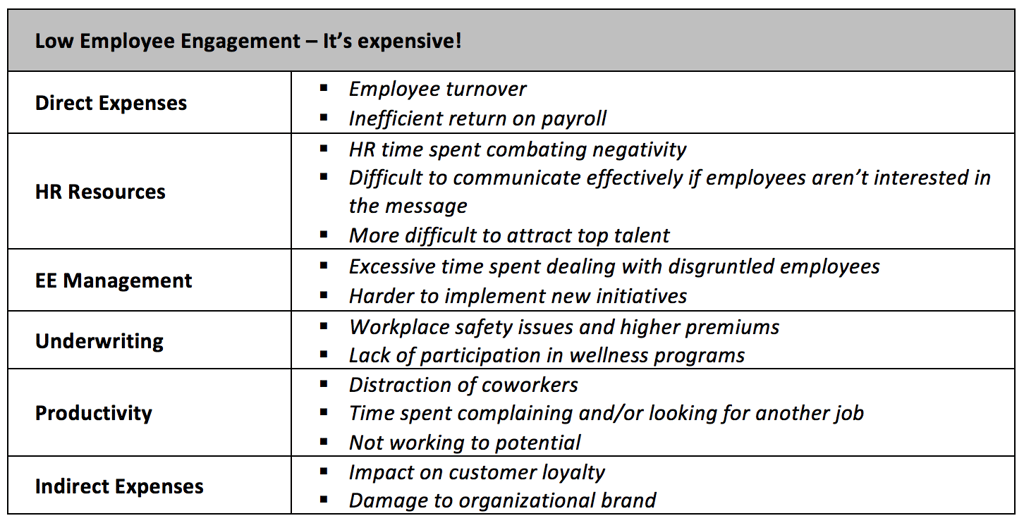Are you tired of hearing about employee engagement? Do you sometimes wish they would just get married already? We get it. And if employees viewed their employers as permanent, lifetime partners, we probably wouldn’t need to keep having these conversations. But for now, we definitely have to keep talking about how to rekindle the employee/employer love.
Who is engaged?
Engaged employees are those who are involved in, enthusiastic about, and committed to their work and workplace. In order for this to occur, employees must be connected to the company vision and to the people who work there. Not only do engaged employees feel like they are part of something bigger than themselves, they tend to work harder and stick around longer.
What happens when people aren’t engaged?
When employees aren’t committed to the workplace relationship, it shows up as a huge drain on company morale and finances. Unengaged employees often feel disillusioned and unappreciated, and can easily become resentful, apathetic, or check out completely.
The cost of doing nothing
For better or for worse, employee engagement has a huge impact on your company. Take a look at some of the direct and indirect costs of low employee engagement.

The benefits of working it out
Tons of effort and research has been poured into understanding the causes and effects of employee/employer engagement. Here are just a few facts:
- According to the Hire Expectations Institute, average organizations have a payroll efficiency factor of 63%. This means that $.37 of every payroll dollar is lost due to poor employee engagement.
- Meanwhile, exceptional organizations see an efficiency factor of closer to 78%, significantly reducing costs from disengagement.
- Cvent research reports that customer loyalty can be as much as 18% higher when employees are highly engaged.
- According to Gallup, highly engaged clients are willing to pay a 23% premium to patronize businesses where they feel a strong connection.
Employee Engagement makes great sense, but that doesn’t mean it comes easy. Like any relationship, it takes time and commitment to make it work. Here are a few things you can start doing to improve things today:
Educate. Define your company goals and vision, then spread the word!
Motivate. Offer great benefits, incentives and good old-fashioned appreciation.
Communicate. Ask employees what they need and LISTEN to what they have to say.
Celebrate. Have some fun! After all, the company that plays together, stays together.
Photo by Atholpady
This is the second post in a series of blogs designed to help you look beyond the cost of insurance to control employee expenses. For more information on this topic, read 500 Words series – An Overview or download our eBook below.







